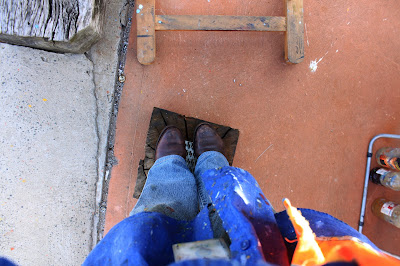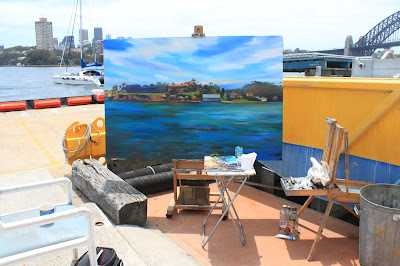This small canvas is of Miller's Point - the boat, that is - not its namesake suburb up the hill! 
MW14 'Millers Point'
2013 oil on canvas 41 x 31cm
Available for sale
There's quite a motley collection of work vessels big and small, berthed at the Sydney Port Corporation's Port Jackson headquarters at Moore’s Wharf. 
MW14 'Millers Point'
2013 oil on canvas 41 x 31cm
Available for sale
As I arrived, "Millers Point", Sydney Port Corporation’s new emergency
response launch, was being lifted from the water onto piles of huge tyres on the wharf, alongside
the crane.
Usually it's in the water at its customary berth in front of Moore's Wharf, but it was waiting to get its twin 225hp Honda outboard motors serviced.
MW14 'Millers Point'
2013 oil on canvas 41 x 31cm
Available for sale
I hadn't painted this new addition to Sydney Port Corporation's fleet before, & I decided to capture the drama of the boat lift in a small canvas.
I must admit that I was still mourning the loss of the historic old warhorse, the 'Poolya', which had been broken up at Glebe Island Wharf, in early February 2013, not long before.
"Millers Point" was designed in Western Australia by Global Marine and built by Axiom Alloys of Mt Druitt.
"Millers Point", is 9.3m in length with a beam of 3.35m and a draft of 0.55m. It has a speed that can exceed 40kn. It has a trihedral hull & is fitted with a 6hp stand-alone fire pump. 
MW14 'Millers Point'
2013 oil on canvas 41 x 31cm
Available for sale
Related Posts



























.JPG)